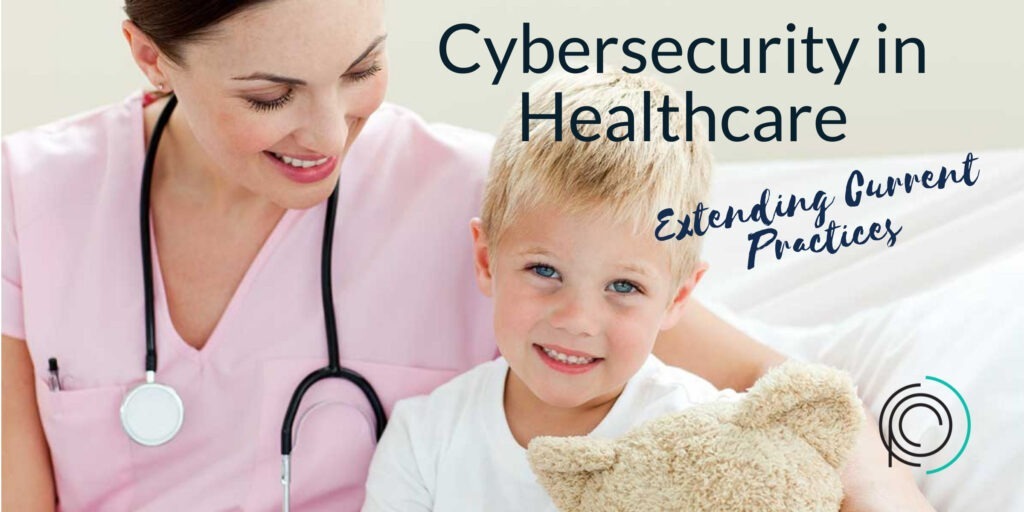Securing Health in a Digital Age: Fortifying Cyber Defenses in Healthcare
As technology continues to advance at an unprecedented pace in the healthcare industry, the critical importance of implementing robust cybersecurity measures has become more apparent than ever. With the widespread adoption of electronic health records (EHRs), the rise of telemedicine, the connectivity of medical devices, and the integration of various other digital systems, healthcare organizations are increasingly vulnerable to a vast array of cyber threats. These threats not only compromise the privacy and security of patient data but also pose significant risks to operational efficiency and the overall integrity of the healthcare system.
To combat these challenges, it is imperative for healthcare providers to not only keep up with but also extend beyond their current cybersecurity practices. This involves adopting a comprehensive approach to cybersecurity, one that includes regular risk assessments, staff training on the latest cyber threats and prevention strategies, investment in state-of-the-art cybersecurity technology, and the development of quick-response protocols to mitigate the impact of potential cyber incidents.
Ensuring the protection of patient data is paramount, as breaches can lead to not only financial loss but also severe reputational damage and legal consequences. Moreover, maintaining operational efficiency is crucial for healthcare providers to deliver timely and effective care. Thus, safeguarding the overall integrity of the healthcare ecosystem is essential for fostering trust among patients and ensuring the seamless delivery of healthcare services in a digitally connected world.
- Understanding the Current Cybersecurity Landscape in Healthcare: Before delving into the nuances of extending current cybersecurity practices, gaining a comprehensive understanding of the specific challenges confronting the healthcare industry is crucial. The allure of the healthcare sector for cybercriminals has significantly increased, primarily due to the treasure trove of sensitive data it encompasses. This includes not only personally identifiable information (PII) but also detailed medical records, insurance information, and confidential financial data. The risks are further compounded by the sophisticated interconnectedness of today’s medical devices and networks, which, while enhancing operational efficiency and patient care, also open the floodgates to potential cyber-attacks. These security breaches not only threaten the confidentiality and integrity of patient data but also pose a significant risk to patient safety and privacy. The situation demands a vigilant and proactive approach to cybersecurity, underscored by a deep understanding of the evolving threats and vulnerabilities unique to the healthcare domain.
- Strengthening Access Controls and Authentication: One crucial aspect of extending current cybersecurity practices is to strengthen access controls and authentication methods. Healthcare organizations should implement robust authentication mechanisms, such as multi-factor authentication (MFA), to ensure that only authorized individuals can access sensitive patient data. Additionally, strong password policies, regular password updates, and privileged access management can significantly reduce the risk of unauthorized access.
- Regular Security Risk Assessments: Conducting thorough and regular security risk assessments stands as a cornerstone in advancing cybersecurity practices. By methodically identifying vulnerabilities and potential threats, healthcare providers can take proactive steps to fortify their defenses. These crucial assessments should encompass a wide range of evaluations, including the scrutiny of networks, systems, and medical devices, as well as a careful examination of third-party vendors and partners engaged in managing patient information. Additionally, it is imperative to assess the physical security measures in place and the effectiveness of staff training programs on data privacy and security protocols. This comprehensive and detailed approach ensures a holistic view of potential risks, allowing for the development of robust strategies to mitigate threats across the entire healthcare ecosystem, thereby safeguarding sensitive patient data against evolving cyber threats.
- Employee Education and Training: Employees are the cornerstone of cybersecurity within healthcare organizations. To bolster defenses against cyber threats, it is imperative to extend current practices to include comprehensive, ongoing education and training programs for all staff members. These programs are crucial for raising awareness about cybersecurity best practices, identifying potential threats, and understanding incident response protocols. Training sessions should cover a wide range of topics, including, but not limited to, phishing awareness, secure data handling practices, and the proper use of technological resources. By fostering a culture of vigilance and knowledge, employees are equipped to act as the first line of defense against cyber threats. Additionally, regular updates and refresher courses should be implemented to keep pace with the evolving cyber threat landscape. Investing in employee education and training not only enhances the organization’s cybersecurity posture but also empowers each staff member to contribute actively to the safeguarding of sensitive information and systems. Well-informed employees are indeed a vital component of any robust cybersecurity strategy within the healthcare sector.
- Implementing Encryption and Data Protection Measures: To safeguard patient data effectively, it’s crucial to implement encryption at various levels, encompassing data at rest, data in transit, and data in use. This approach ensures that all patient information remains secure, irrespective of its state. Healthcare organizations are advised to adopt robust encryption algorithms that are widely recognized for their strength and reliability. Additionally, secure key management practices are vital to maintaining the integrity and confidentiality of data, preventing unauthorized access and potential breaches.
Furthermore, to enhance data protection measures, regular data backups are essential. These backups should be conducted frequently to ensure that, in the event of a system failure or data loss incident, patient information can be quickly and accurately restored. Proper data disposal techniques are also critical. When data is no longer needed or is outdated, it should be disposed of in a manner that makes it irretrievable, thus safeguarding against unauthorized access to sensitive information.
Lastly, data loss prevention mechanisms play a crucial role in a comprehensive data protection strategy. These mechanisms are designed to detect and prevent potential data breaches or unauthorized data access attempts before they happen. By monitoring data flows, healthcare organizations can identify unusual patterns or suspicious activities, enabling them to respond promptly to secure the data.
By implementing these advanced encryption and data protection measures, healthcare organizations can significantly enhance the security of patient data. This not only helps in maintaining patient trust but also in complying with legal and regulatory requirements related to data privacy and protection.
5. Enhanced Network Security and Monitoring: To elevate cybersecurity measures within the healthcare sector, it’s vital to implement advanced network security protocols and maintain vigilant, continuous monitoring. This includes deploying robust firewalls, sophisticated intrusion detection systems (IDS), and efficient intrusion prevention systems (IPS) tailored to detect and thwart unauthorized access and malicious activities effectively. Moreover, network segmentation and isolation strategies should be employed not only to contain potential threats but also to significantly limit the impact of any security breaches, ensuring sensitive patient data remains protected. Additionally, establishing real-time monitoring and developing comprehensive incident response capabilities are crucial. These measures enable healthcare organizations to rapidly identify and mitigate security incidents, minimizing potential damage and maintaining the trust of patients and stakeholders.
6. Collaboration and Information Sharing: The healthcare industry stands to gain significantly from enhanced collaborative efforts and the sharing of critical information to bolster cybersecurity measures. By engaging in the sharing of threat intelligence, industry best practices, and valuable lessons learned through past experiences, healthcare organizations can ensure they remain abreast of the most current threats and the most effective defense mechanisms against such threats. Furthermore, fostering stronger collaboration with renowned cybersecurity experts, key industry associations, and regulatory bodies can provide invaluable insights and guidance. This collective effort can aid healthcare providers in significantly improving their cybersecurity posture by developing more robust strategies and implementing advanced security protocols, ultimately safeguarding sensitive patient data and healthcare systems against cyber threats.
As the healthcare industry ventures deeper into the realm of digital transformation, the imperative to prioritize cybersecurity has never been more critical. This digital shift requires a steadfast commitment to protecting patient data, ensuring operational continuity, and upholding the trust of those who rely on healthcare services. To navigate this complex landscape, healthcare organizations must not only extend their current cybersecurity practices but also innovate and adapt to emerging threats. By rigorously mitigating risks, diligently preventing cyber-attacks, and steadfastly ensuring the confidentiality, integrity, and availability of sensitive information, healthcare providers can safeguard their critical infrastructure.
A multifaceted approach is essential for building a robust cybersecurity framework. This includes comprehensive employee education to foster a culture of vigilance against potential cyber threats, implementing robust access controls to ensure that only authorized individuals can access sensitive data, employing encryption methods to protect data in transit and at rest, enhancing network security to thwart intrusions, and fostering collaboration across the industry to share insights and best practices.
Moreover, the adoption of advanced security technologies, such as artificial intelligence and machine learning, can provide healthcare organizations with predictive capabilities to identify and neutralize threats before they can cause harm. Regular security assessments and audits should also be integral components of a healthcare organization’s cybersecurity strategy, enabling the identification of vulnerabilities and the reinforcement of security measures.
In today’s digital healthcare landscape, the criticality of cybersecurity is paramount. For those in search of expert advice on adopting robust cybersecurity protocols or steering through the digital evolution in healthcare, we encourage you to schedule a no-obligation consultation with our specialists. Our committed team is here to assist healthcare entities in strengthening their security measures, safeguarding patient information, and ensuring a secure digital future.







